The Evolution of Ladies’ Hemlines Over the Past 2 Centuries
Nothing stays the same- especially not fashion.
The length (or lack) of ladies hemlines has been a source of contention for centuries. Each time a new style of skirt length was introduced it caused a stir. Older generations were often flabbergasted at the short skirts young women were wearing, while young women embraced the newest trends. We tend to think of hemlines as rising and rising, but that’s not exactly the whole story.

The truth is ladies skirt lengths in the West have gone up and down over time, each wave causing a ripple in the fashion continuum. For most of this time women were largely expected to conform to the skirt length of the given era- or risk being seen as unfashionable and possibly even immoral.
1800s
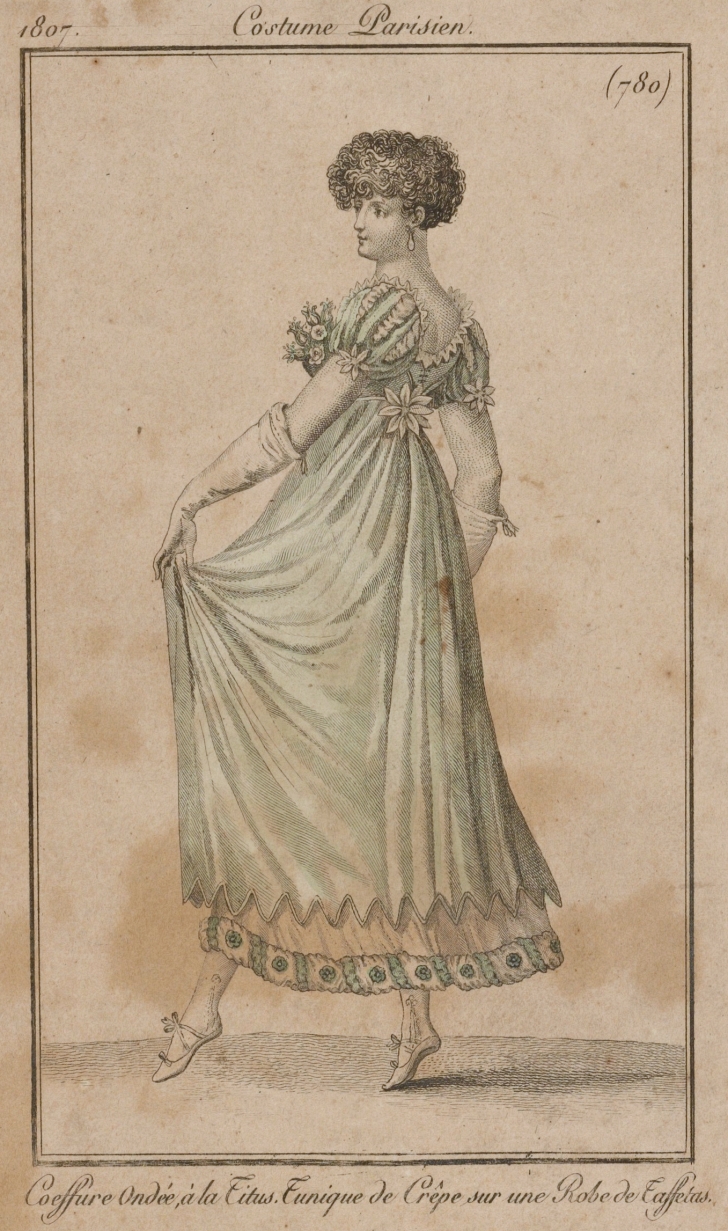
In the early 1800s we might assume that women’s skirts were long and they were…by today’s standards. But, they were not touching the floor. In fact the Regency period ushered in an era in women’s fashion in which relaxed silhouettes and slightly above the ankle hemlines were common. The empire waist was popular during this time and would remain so in Europe for decades to come.
1810s
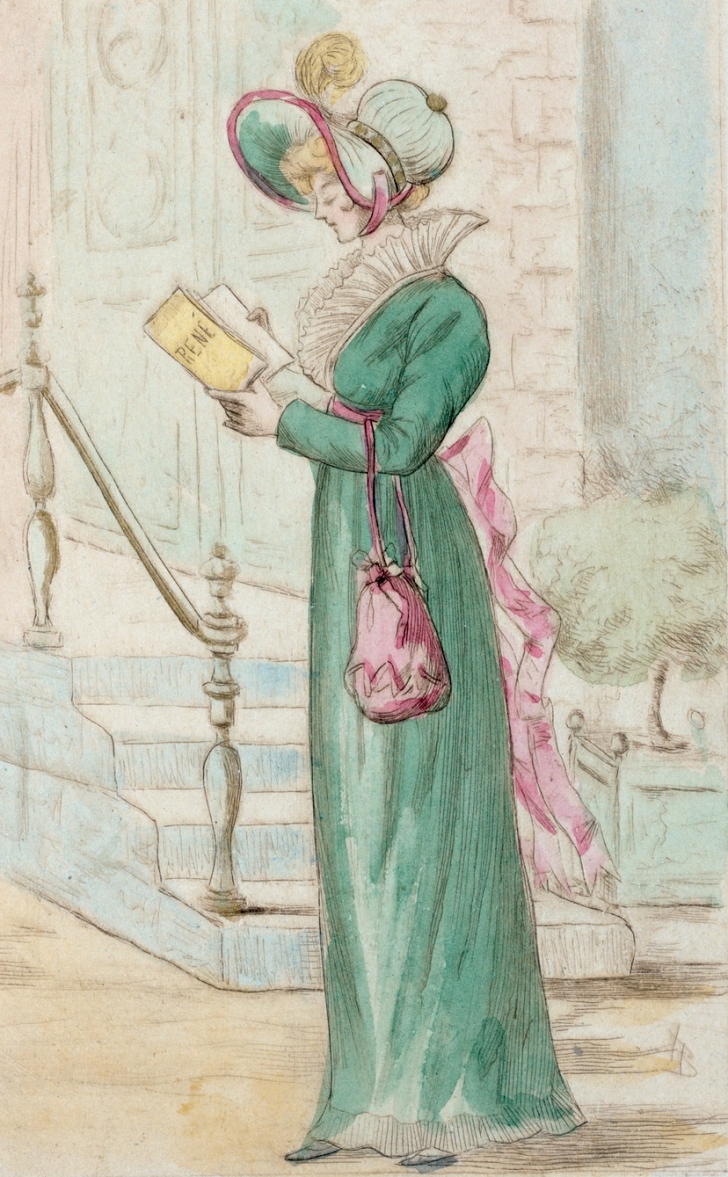
In the 1820s the empire look was still in full swing, but the hemlines were slightly longer than in the previous decade. Grecian silhouettes were not uncommon, supported by hidden corsets and flowy pantaloons that made the dresses look effortless- almost like nightgowns in some cases.
1820s

In this decade more formal bodices combined with increasingly fuller skirts in a move away from the easy empire waists of the earlier decades. Skirt lengths were right at the ankle, though some variation in the exact height was not uncommon.
1830s
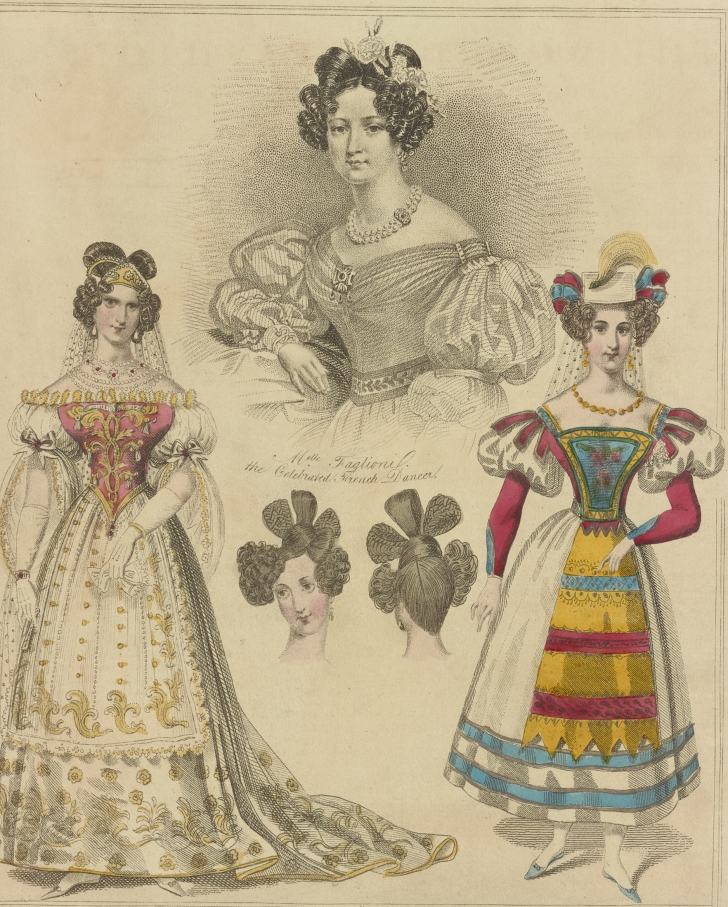
The 1830s saw a move away from the high waisted dresses of the previous decades. Instead pointed bodices and fuller skirts were coming into fashion, the precursors to the hoop skirts. Hemlines during this time could be floor or ankle length.
1840s
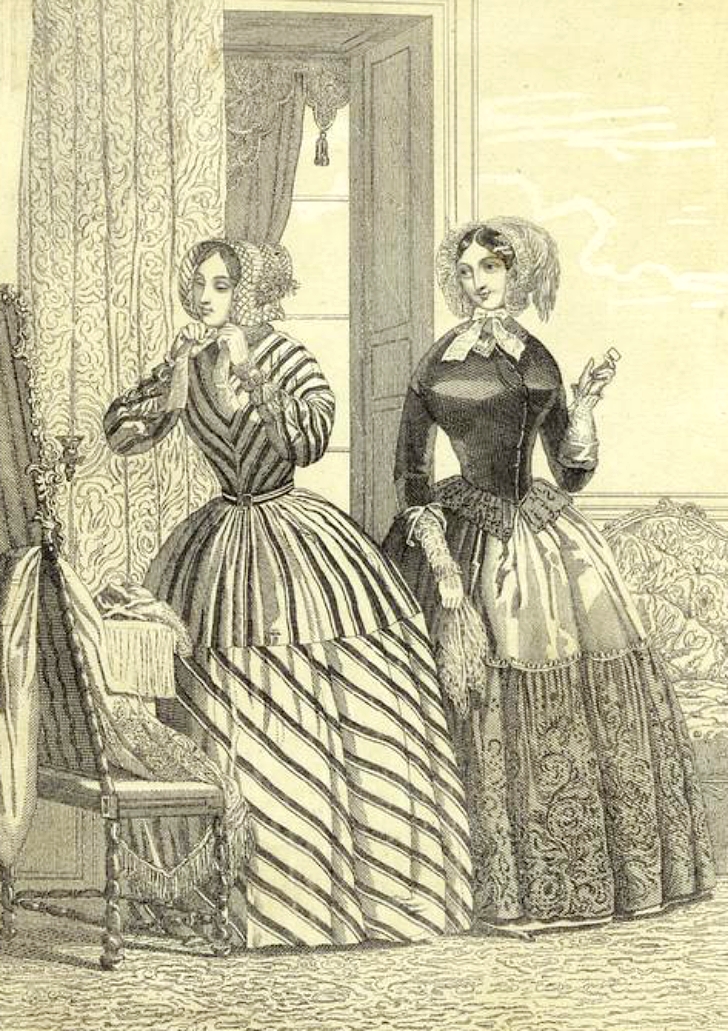
Tight bodices over corsets, voluminous skirts, and lace bonnets were the outfit du jour in the 1840s. Skirts were still not quite as big as they would get during and after the civil War, but they were definitely big. Floor length hemlines were the norm during this decade.
1850s
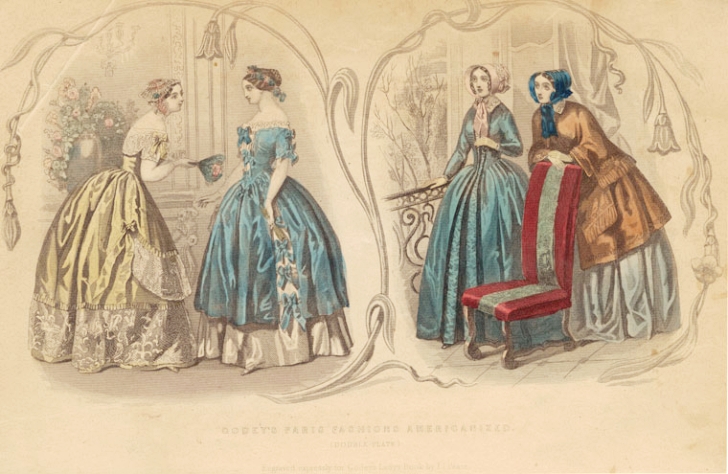
Huge, floor length hoop skirts were the fashion in the 1850s, often paired with a smart jacket over a blouse for daytime or with an off-the-shoulder portrait neckline for balls and formal events. For women of means the cumbersome hoops and petticoats worn underneath these large skirts were navigated with the help of servants. Working class women often wore full skirts, but without as large of large of hoops (or sometimes no hoops) and were lacking other fiddly design features.
1860s
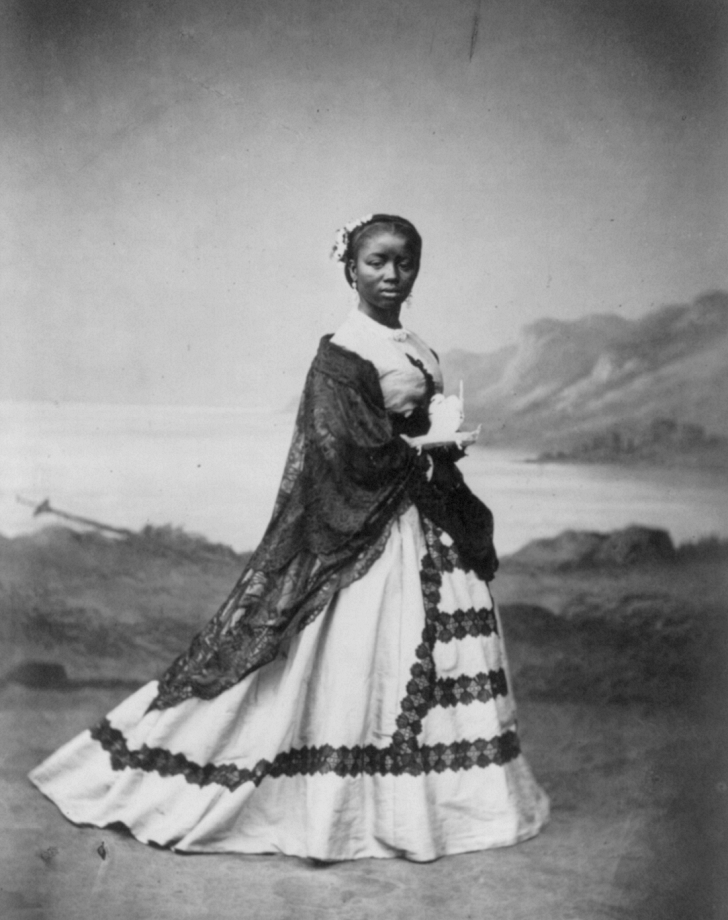
Women in the 1860s were still wearing large hoop skirts that completely obscured their feet. Elaborate trims, trains, and lacework often went with this style. Even working women with plain dress details still worked in large skirts that touched the ground when they walked.
1870s
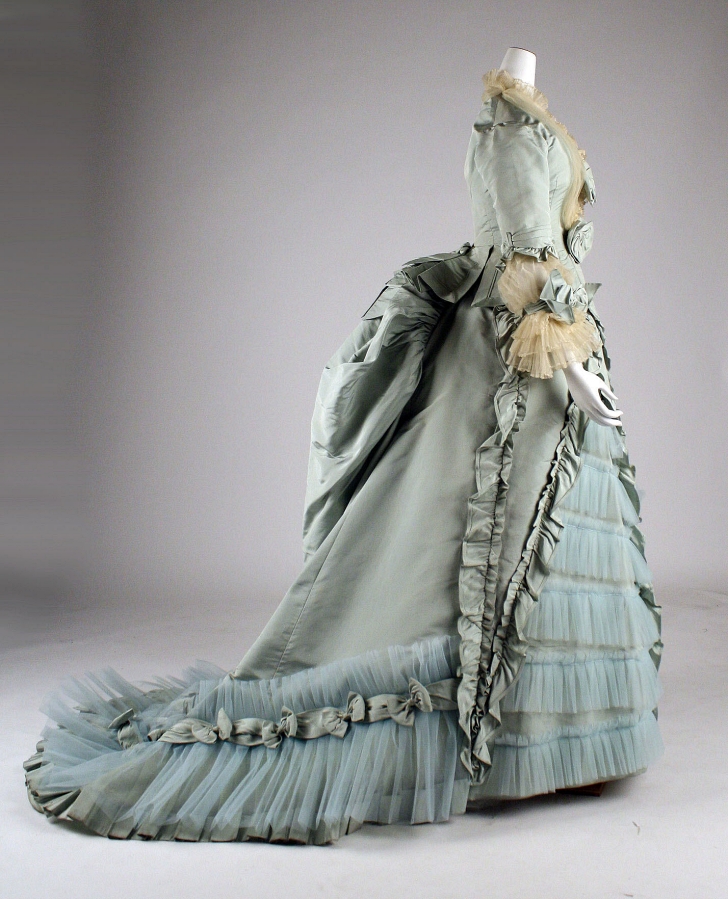
The 1870s saw a reduction in skirt width, but an addition to the back volume in the forms of the bustle and the train. The accepted skirt length of the era was almost floor length, meaning that most women would have only shown the very tips of their shoes when they walked.
1880s

The bustle and corset were still very much a part of fashion in the 1880s, but trains and hoop skirts were going out of style. Along with decreased skirt width and detail also came a very slight rise in the hemlines as well. Anything from just below the calf to floor length was workable, depending on the exact style one was going for.
1890s
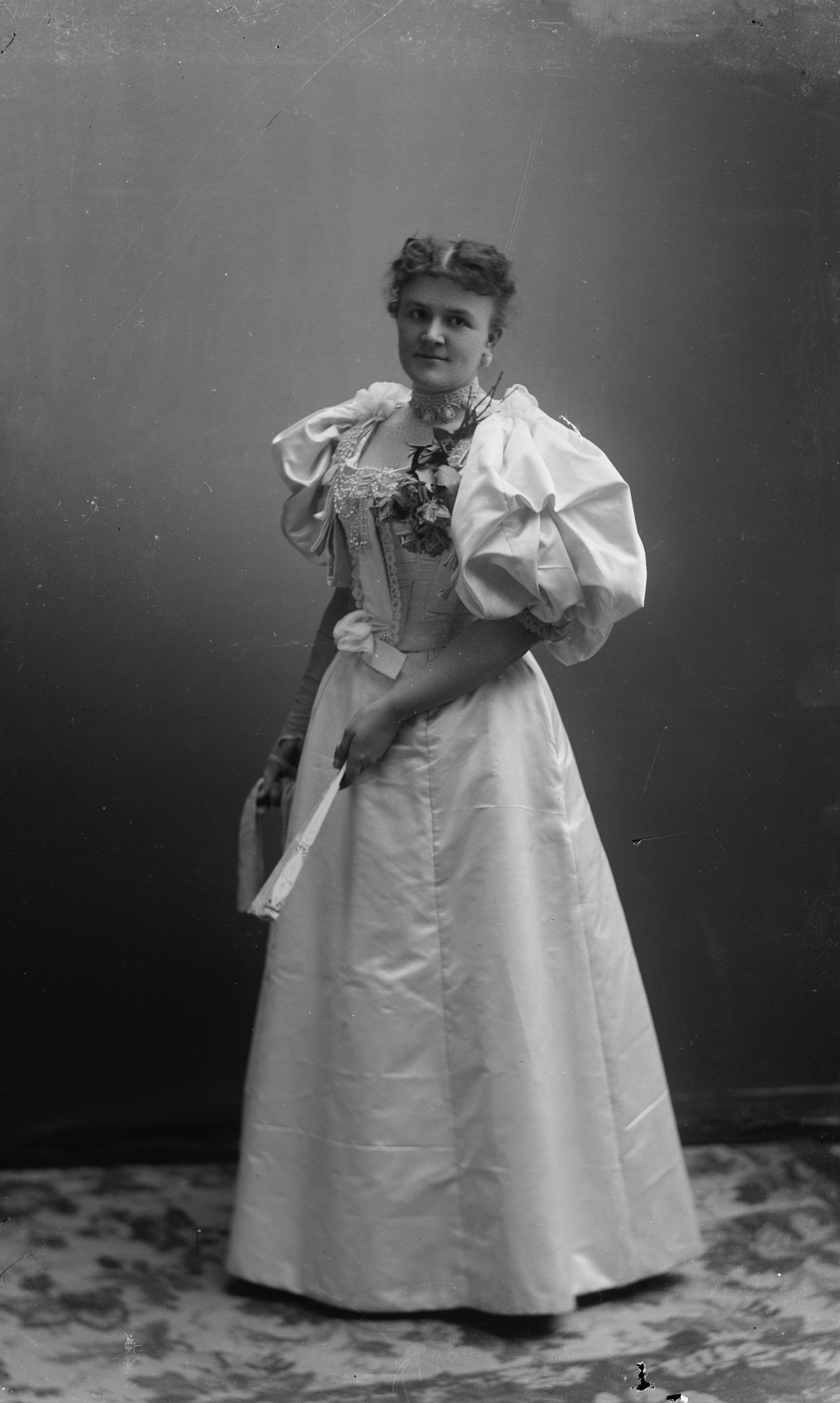
Leg o’ mutton sleeves (also known as gigot sleeves) were quite popular during the 1890s and these huge sleeves were balanced out by slimmer skirts. Still long, these hemlines were not quite down to the floor. These less voluminous skirts allowed for more vigorous exercise -like riding bikes and horses or playing tennis.
1900s
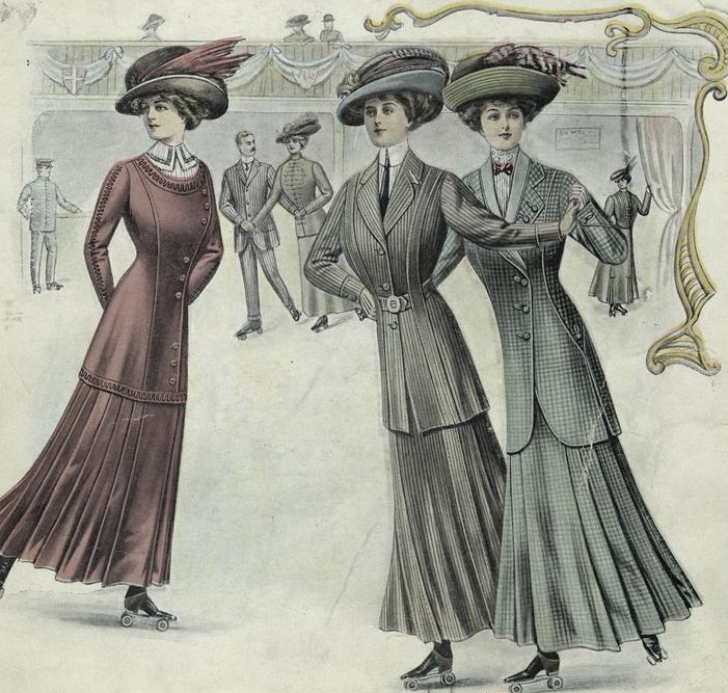
During the 1900s women were wearing the pigeon breasted look combined with long skirts that hit at the ankle. The Edwardian era saw other trends in ladies fashion as well, such as the hobble skirt which was fitted towards the ankle and restricted movement. Quite paradoxically this was also the era in which women were entering sports more often and the women’s suffrage movement was gaining steam.
1910s
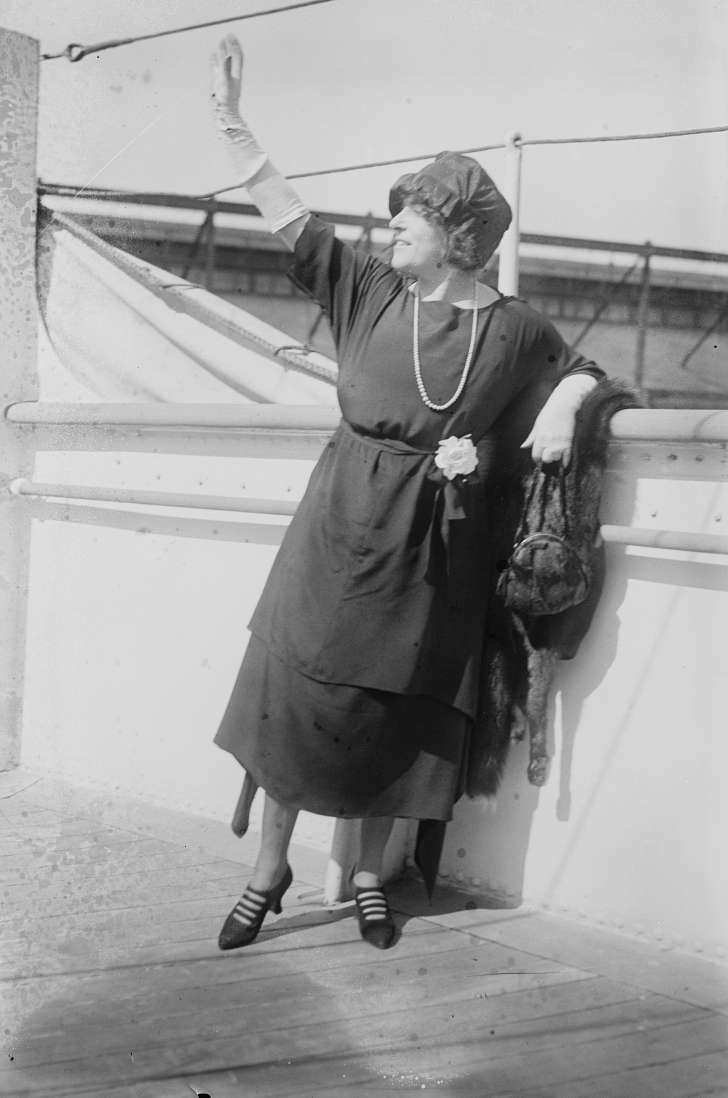
Women heading to work in factories during World War I favored more practical, shorter skirts that hit at the calf or above. This was also a time when the trouser skirt (think harem pants) had a brief dance with popularity, showing that the changes to women’s clothing were coming fast.
1920s
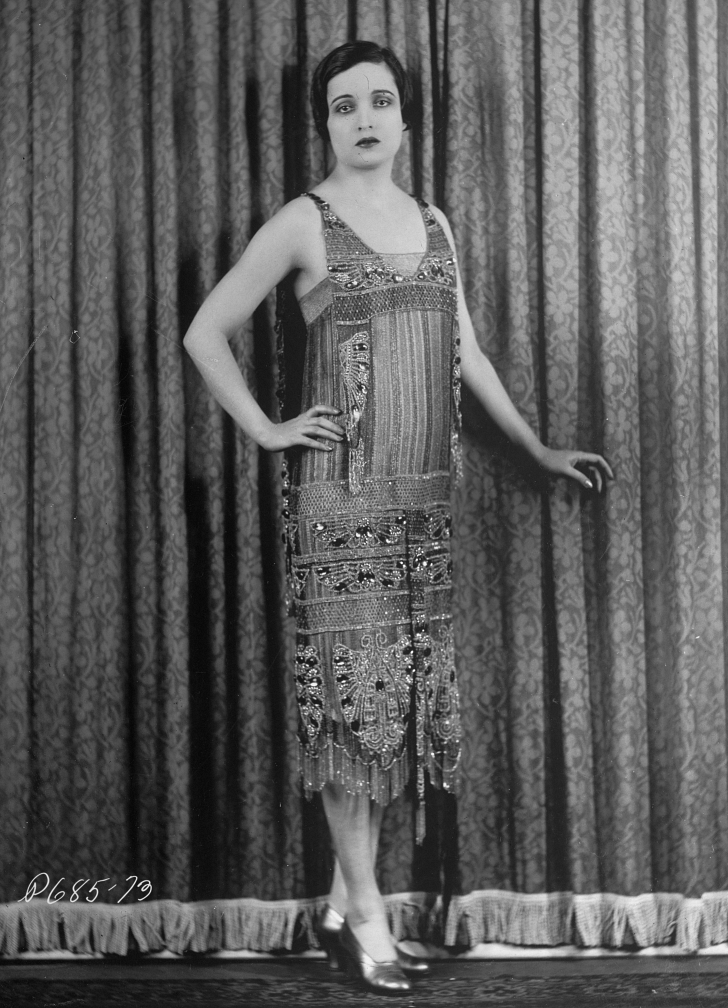
The so-called Jazz Age, the 1920s were a time of prosperity and decadence. This was exemplified in the clothing of the wealthy with women’s gowns especially favoring complicated handkerchief hemlines and beaded embellishments. Despite the notion that the flappers dominated the fashion scene with short skirts, most women were still wearing modest dresses that came well below the knee during the 1920s.
1930s

The look of the 1930s was a slim, straight shape, often enhanced through long, narrow skirts and slimming girdles. While accents on women’s dresses were quite feminine, the overall look was androgynous (a look that got started with Chanel) with a flat bust and narrow hipline favored over hourglass figures. This look was topped off by tea length skirts which hit at the calf- often more conservative than the decade before.
1940s
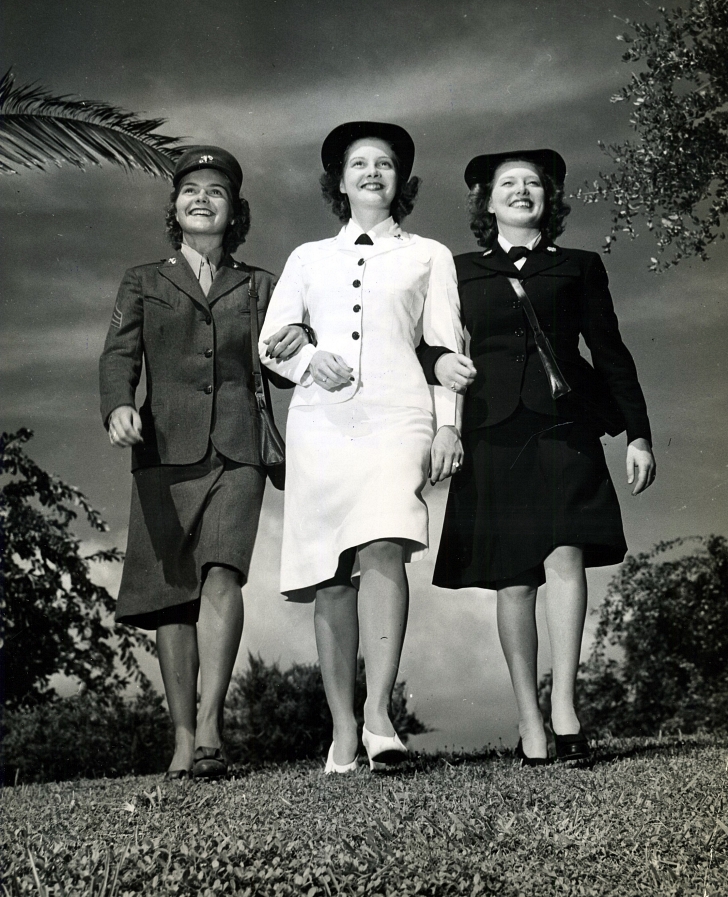
Women in the 1940s women wore a variety of skirt lengths owing to having to reuse older clothing during the wars years (and after). Following the Allied victory and the end of widespread rationing, women embrace fuller, longer skirts that were ushered in by Christian Dior and his New Look dresses.
For many women during the decade the skirt length was often hovering somewhere around the knee and this was true for women in most branches of military service as well. Longer dresses for formal events were still the norm during this era.
1950s

In the 1950s many women and young ladies wore skirts anywhere from just below the knee to just above the ankle in fit and flare silhouettes. These skirts could be worn with or without petticoats. More form fitting pencil skirts were also popular, and towards the first half of the decade they tended to be longer- reaching to just a few inches above the ankle.
1960s
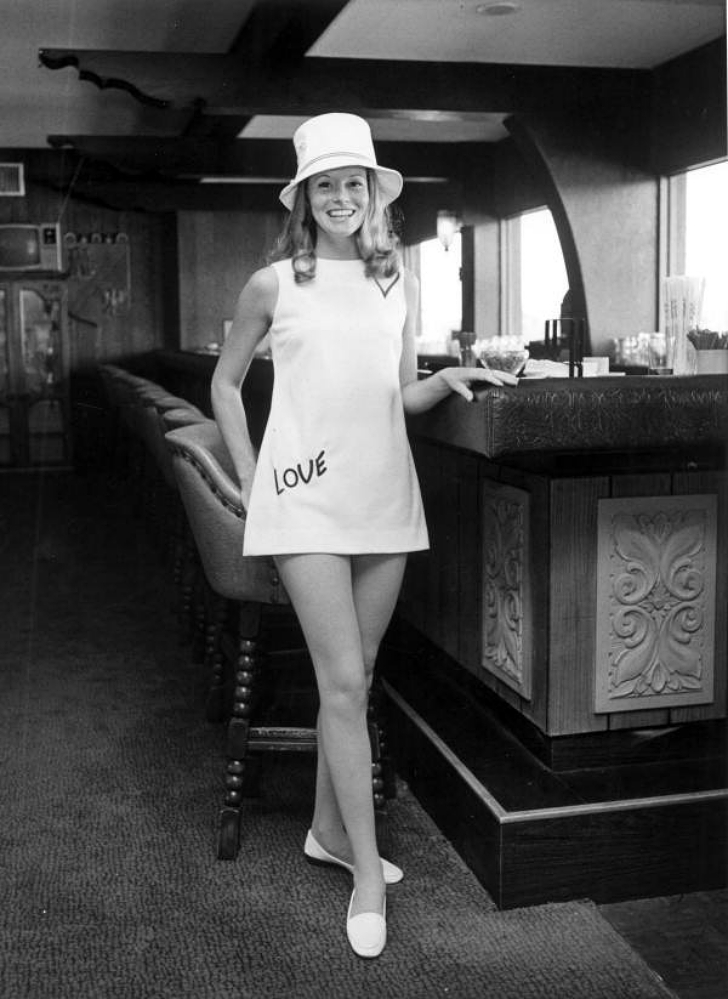
At the beginning of the decade most women were still wearing designs reminiscent of the New Look, but designers like Mary Quant and André Courrèges, followed by babydoll designer, Barbara Hulanicki, made mini skirts the norm. These shorter dresses often de-emphasized the waistline and featured cute or kicky patterns that signaled a departure from traditional ladies wear and put the focus on youth culture.
For young ladies who really wanted to push the boundaries hemlines were further shortened at home to barely tunic length. Not surprising during this time colorful tights rose in popularity as a form of modesty while wearing these short skirts and dresses.
1970s
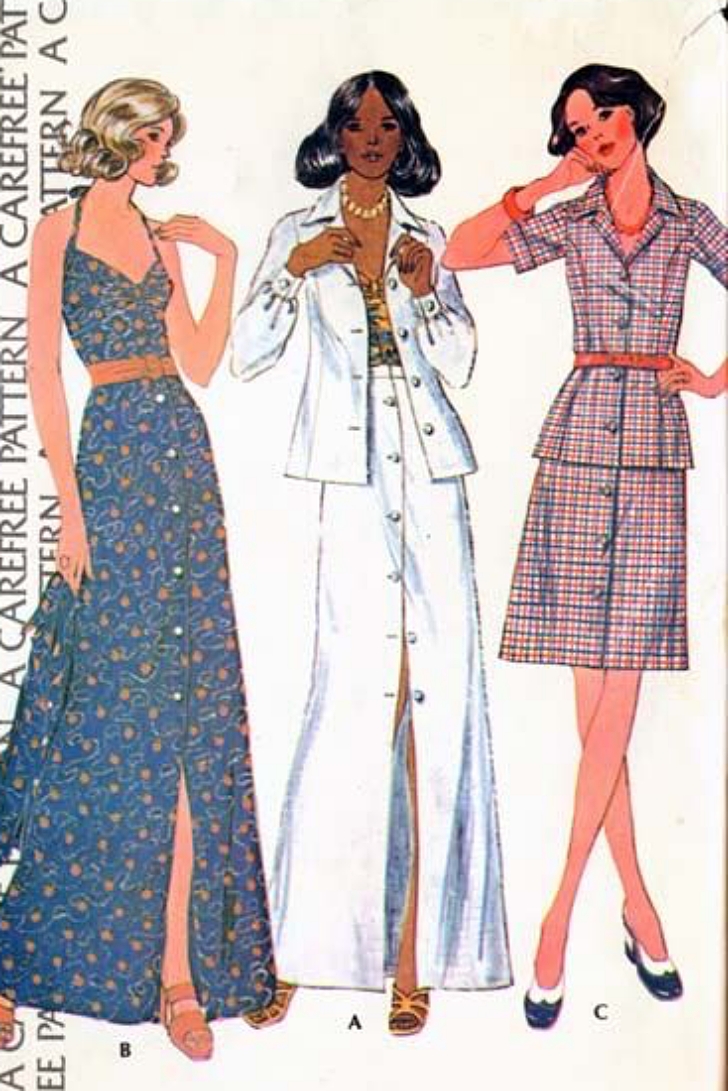
As a counter to the mini skirt, the maxi skirt and the midi skirt were released as alternatives in the 1970s. Mini skirts continued to be popular during this time, as did extremely modest prairie dresses and Gunne Sax frocks from Jessica McClintock.
The 1970s marked the end of the practice of all women essentially following one skirt length at a time. Instead, women could wear any length of skirt they wanted (or even pants). It was a new era in fashion.
SKM: below-content placeholderWhizzco for DOT

